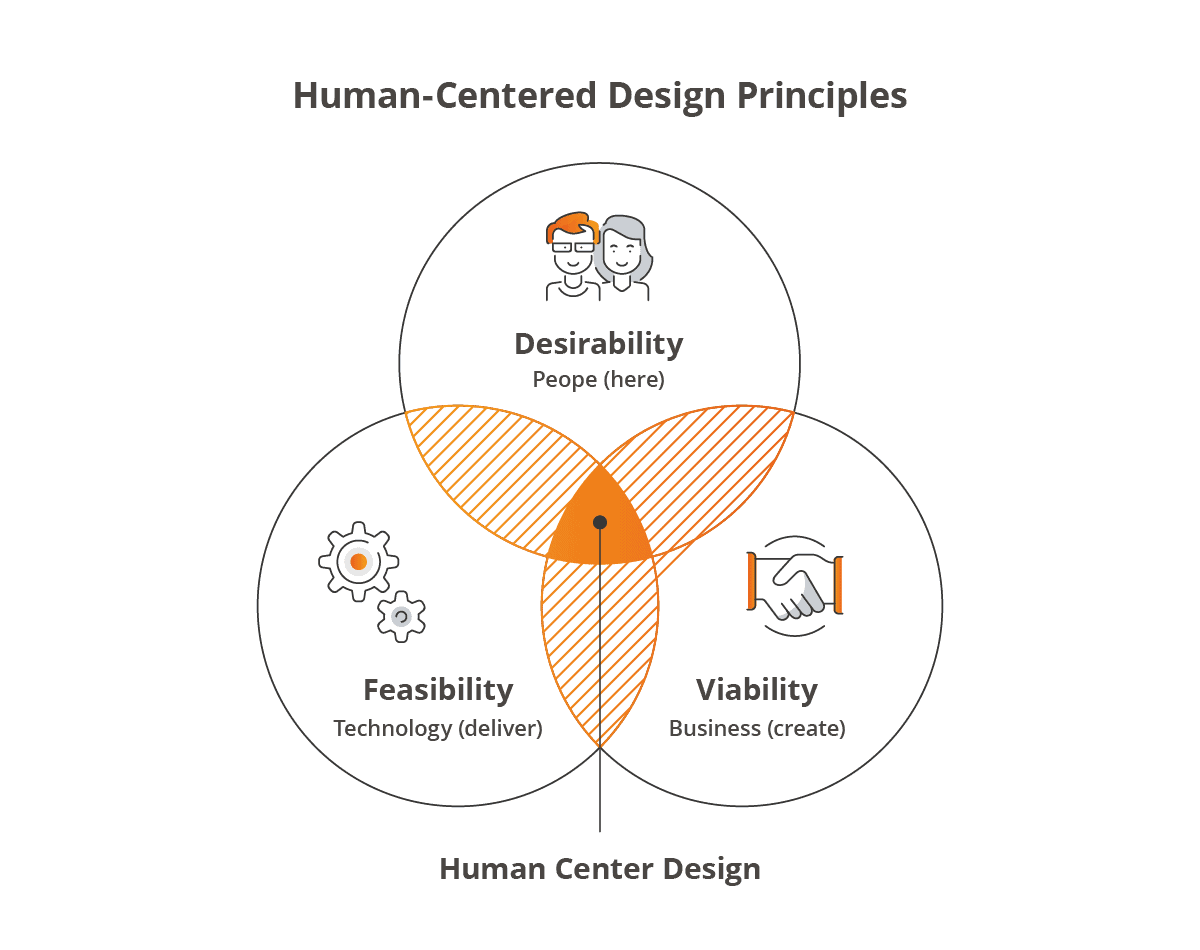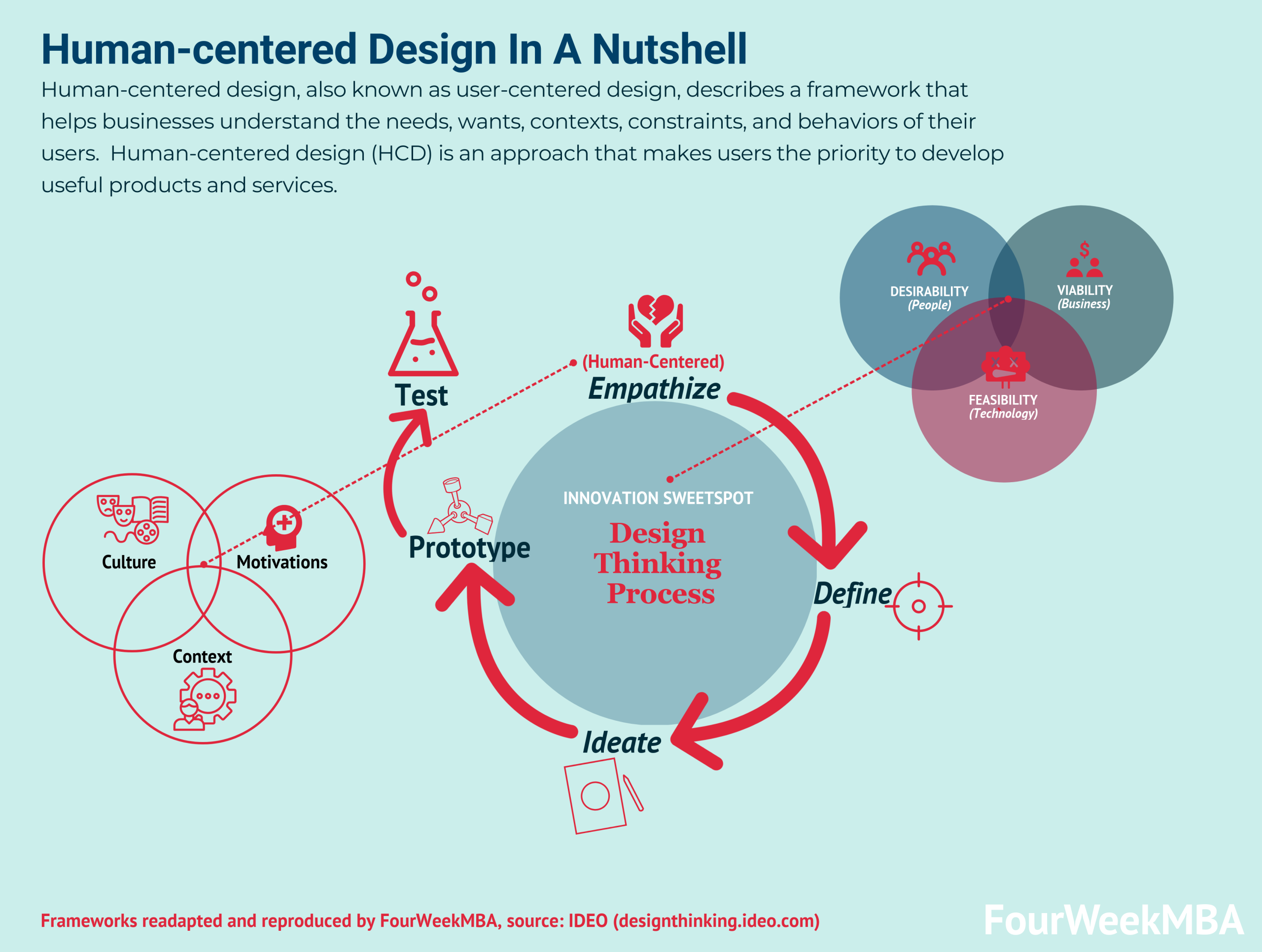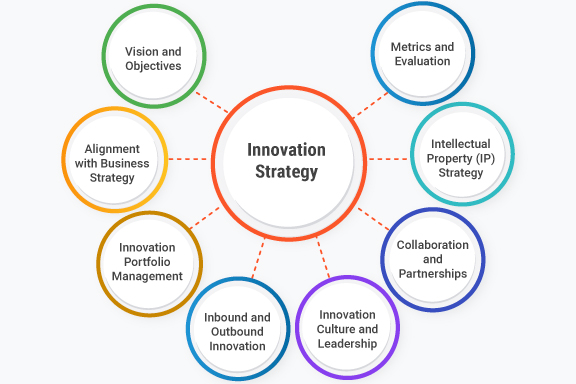Managing Innovation and Entrepreneurship - 4
 Vishesh Raghuvanshi
Vishesh Raghuvanshi
Innovations Aimed at Humans
Innovations aimed at humans focus on addressing human needs, improving quality of life, and enhancing user experiences. These innovations prioritize understanding and solving problems faced by people in their daily lives, making products, services, and processes more user-friendly, efficient, and accessible.
Key Concepts
Human-Centered Innovation:
Definition: An approach to innovation that places the needs, behaviors, and experiences of people at the center of the innovation process.
Objectives: To create solutions that are deeply relevant to users, improving their interactions with products and services.
Importance:
User Satisfaction: Ensures that innovations meet the actual needs and preferences of users, leading to higher satisfaction and adoption rates.
Market Relevance: Products and services that solve real problems are more likely to succeed in the market.
Human-Centered Design (HCD)

Principles of HCD:
Empathy: Understanding the users’ context, experiences, and emotions.
Involvement: Actively involving users in the design and development process.
Iterative Process: Continually testing and refining ideas based on user feedback.
Phases of HCD:
Inspiration: Gathering insights about users and their needs through observations and interviews.
Ideation: Generating a wide range of ideas and solutions based on the insights gathered.
Implementation: Prototyping and testing the ideas with users, making iterative improvements.

Examples of Innovations Aimed at Humans
Healthcare Innovations:
Wearable Health Devices: Devices like fitness trackers and smartwatches that monitor health metrics and provide actionable insights.
Telemedicine: Platforms that allow remote consultations with healthcare providers, increasing accessibility to medical services.
Consumer Products:
Smart Home Devices: Innovations like smart thermostats and voice-activated assistants that enhance convenience and efficiency in home management.
User-friendly Gadgets: Products designed with intuitive interfaces and accessible features to cater to diverse user groups, including the elderly and people with disabilities.
Service Innovations:
On-demand Services: Platforms like Uber and Airbnb that provide convenient and efficient access to transportation and accommodation services.
Personalized Learning: Educational technologies that adapt to individual learning styles and paces, providing personalized education experiences.
Benefits of Innovations Aimed at Humans
Enhanced User Experience:
Usability: Products and services that are easy to use and intuitive enhance the overall user experience.
Accessibility: Innovations that consider diverse user needs, including those with disabilities, ensure broader accessibility.
Increased Adoption and Loyalty:
Market Acceptance: Solutions that address real user needs are more likely to be adopted and succeed in the market.
Customer Loyalty: Satisfied users are more likely to become loyal customers and advocates for the product or service.
Competitive Advantage:
Differentiation: Human-centered innovations can differentiate a company from its competitors, providing a unique selling proposition.
Brand Reputation: Companies known for user-friendly and impactful innovations can build a strong, positive brand reputation.
Challenges in Human-Centered Innovation
Understanding User Needs:
Accurate Insights: Gaining deep and accurate insights into user needs can be challenging and resource-intensive.
Changing Preferences: Keeping up with evolving user preferences requires continuous engagement and adaptability.
Balancing Innovation and Practicality:
Feasibility: Ensuring that innovative ideas are practical and feasible to implement within existing technological and business constraints.
Cost Management: Balancing the costs associated with developing user-centered innovations with potential benefits and returns.
Role of Co-Creation in the Innovation Process
Co-creation is a collaborative innovation strategy where companies engage customers, employees, partners, and other stakeholders in the innovation process. This approach leverages the collective creativity and knowledge of all participants to develop products, services, and solutions that better meet user needs and market demands.
Key Concepts
Definition:
- Co-Creation: The practice of involving a diverse group of stakeholders in the innovation process to jointly create value and develop new offerings.
Principles:
Collaboration: Engaging various stakeholders in open and constructive dialogue.
Participation: Allowing stakeholders to contribute ideas, feedback, and expertise.
Empowerment: Enabling stakeholders to have a real influence on the outcome.
Importance of Co-Creation
Enhanced Innovation Quality:
Diverse Perspectives: Incorporating a wide range of viewpoints leads to more creative and well-rounded solutions.
Real-World Insights: Stakeholders provide practical insights and feedback that help ensure the innovation addresses actual needs.
Increased Market Relevance:
User-Centric Solutions: Co-created innovations are more likely to meet user expectations and solve real problems.
Market Fit: Products and services developed through co-creation are better aligned with market demands, increasing their chances of success.
Strengthened Relationships:
Customer Engagement: Involving customers in the innovation process builds loyalty and trust.
Collaborative Culture: Fostering a culture of collaboration and openness within the organization.
Stages of the Co-Creation Process
Idea Generation:
Brainstorming Sessions: Engaging stakeholders in generating a wide range of ideas.
Crowdsourcing: Using online platforms to gather ideas from a broad audience.
Concept Development:
Prototyping Workshops: Collaborative sessions to create and refine prototypes.
Feedback Loops: Continuous feedback from stakeholders to improve the concepts.
Testing and Validation:
Pilot Programs: Implementing small-scale pilots to test the viability of innovations.
User Testing: Collecting user feedback through testing to validate and refine solutions.
Implementation:
Collaborative Implementation: Working with stakeholders to roll out the innovation.
Monitoring and Iteration: Continuously monitoring performance and iterating based on feedback.
Examples of Co-Creation in Practice
Consumer Goods:
LEGO Ideas: A platform where fans can submit ideas for new LEGO sets, with popular ideas potentially becoming official products.
Threadless: An online community where users submit T-shirt designs, and the community votes on which designs should be produced and sold.
Technology:
Linux Open Source Development: A collaborative project where developers from around the world contribute to the development and improvement of the Linux operating system.
Mozilla Firefox: A web browser developed with contributions from a global community of developers and users.
Services:
IKEA Co-Create: Involving customers in the design and development of new furniture and home products.
Starbucks Idea Portal: A platform for customers to submit and vote on ideas for new products and services at Starbucks.
Benefits of Co-Creation
Increased Innovation Speed:
Faster Development Cycles: Collaborative efforts can accelerate the innovation process by pooling resources and expertise.
Rapid Prototyping: Quickly developing and iterating prototypes based on immediate feedback.
Reduced Risk:
Validated Concepts: Engaging stakeholders early ensures that ideas are validated and refined before significant investments are made.
Shared Responsibility: Distributing the innovation effort reduces the risk for any single participant.
Enhanced Creativity:
Creative Synergy: Combining the creative potential of diverse stakeholders leads to more innovative solutions.
Cross-Pollination of Ideas: Ideas from different fields and perspectives can inspire unique and innovative approaches.
Challenges in Co-Creation
Managing Diverse Inputs:
Coordination Complexity: Ensuring effective collaboration among diverse stakeholders can be challenging.
Conflict Resolution: Balancing conflicting ideas and interests requires strong facilitation skills.
Ensuring Engagement:
Sustaining Participation: Keeping stakeholders motivated and engaged throughout the process can be difficult.
Value Alignment: Ensuring that the co-creation process aligns with the values and goals of all participants.
Intellectual Property Issues:
IP Ownership: Clarifying and managing IP rights in a collaborative environment can be complex.
Fair Compensation: Ensuring that contributors are fairly recognized and compensated for their contributions.
The Strategy of Innovation Process
The strategy of the innovation process involves systematically planning, implementing, and managing activities to develop new products, services, or processes. This strategic approach ensures alignment with organizational goals, effective resource utilization, and the creation of a competitive advantage.
Key Concepts
Innovation Strategy Definition:
- Innovation Strategy: A plan outlining how a company will use innovation to achieve its objectives, including the development of new products, processes, and business models.
Importance of Innovation Strategy:
Alignment: Ensures innovation efforts are aligned with the company’s overall strategic goals.
Resource Allocation: Guides the allocation of resources towards the most promising innovation projects.
Competitive Advantage: Helps create and sustain a competitive advantage in the market.

Components of Innovation Strategy
Vision and Goals:
Vision: A clear and compelling vision of the future guiding the innovation efforts.
Goals: Specific, measurable objectives that the innovation strategy aims to achieve.
Innovation Portfolio:
Balanced Portfolio: A mix of incremental, radical, and transformational innovations to manage risk and ensure steady growth.
Project Selection: Criteria and processes for selecting the most promising innovation projects.
Resource Allocation:
Budgeting: Allocating financial resources to support innovation projects.
Talent Management: Ensuring the right people with the right skills are involved in innovation activities.
Process and Structure:
Innovation Process: Structured stages of the innovation process, from idea generation to commercialization.
Organizational Structure: Designating roles and responsibilities for managing innovation.
Steps in Developing an Innovation Strategy
Assessing the Current State:
Internal Analysis: Evaluating the company’s current innovation capabilities and performance.
External Analysis: Analyzing market trends, customer needs, and competitive landscape.
Setting Strategic Priorities:
Focus Areas: Identifying key areas where innovation can drive the most value.
Innovation Objectives: Defining specific targets and outcomes for innovation efforts.
Building an Innovation Portfolio:
Project Selection: Choosing a balanced mix of short-term and long-term innovation projects.
Risk Management: Assessing and managing the risks associated with different innovation projects.
Allocating Resources:
Funding: Ensuring adequate financial support for innovation activities.
Human Resources: Assigning skilled personnel to innovation projects.
Implementing the Strategy:
Action Plan: Developing detailed plans for executing innovation projects.
Milestones: Setting key milestones and timelines for achieving innovation goals.
Monitoring and Evaluation:
Performance Metrics: Defining metrics to track the progress and success of innovation projects.
Feedback Loops: Incorporating feedback to continually refine and improve the innovation strategy.
Approaches to Innovation Strategy
Open Innovation:
Collaborative Approach: Engaging external partners, customers, and other stakeholders in the innovation process.
Benefits: Access to a wider pool of ideas and faster innovation cycles.
Closed Innovation:
Internal Focus: Relying solely on internal resources and capabilities for innovation.
Benefits: Greater control over the innovation process and intellectual property.
Disruptive Innovation:
Transformational Changes: Creating innovations that disrupt existing markets and create new ones.
Examples: Technologies or business models that significantly alter industry dynamics.
Challenges in Developing Innovation Strategy
Resource Constraints:
Limited Budget: Balancing innovation investments with other business priorities.
Talent Shortages: Ensuring access to skilled personnel for innovation projects.
Cultural Barriers:
Resistance to Change: Overcoming organizational inertia and resistance to new ideas.
Encouraging Creativity: Fostering a culture that supports risk-taking and experimentation.
Market Uncertainty:
Changing Trends: Adapting to rapidly evolving market conditions and customer preferences.
Competitive Pressure: Staying ahead of competitors in a dynamic market environment.
Types and Selection of Appropriate Strategies
In the context of innovation management, selecting the appropriate strategy is crucial for ensuring that innovation efforts are aligned with organizational goals and market needs. Different types of strategies can be employed depending on the nature of the innovation, the competitive landscape, and the resources available.
Types of Innovation Strategies
Incremental Innovation:
Definition: Small, continuous improvements made to existing products, services, or processes.
Characteristics: Low risk, builds on existing capabilities, and aims to improve efficiency and performance.
Examples: Regular updates to software applications, minor product enhancements, process optimizations.
Radical Innovation:
Definition: Significant breakthroughs that create new markets or disrupt existing ones.
Characteristics: High risk, requires new capabilities, and can lead to substantial competitive advantage.
Examples: Development of the smartphone, the introduction of electric vehicles, and the creation of new business models like the sharing economy.
Disruptive Innovation:
Definition: Innovations that start in niche markets but eventually displace established products and services.
Characteristics: Initially lower performance than existing solutions but offer unique advantages such as lower cost or convenience.
Examples: Digital cameras replacing film cameras, online streaming services replacing traditional cable TV.
Open Innovation:
Definition: Leveraging external ideas, technologies, and paths to market in conjunction with internal innovation efforts.
Characteristics: Collaborative approach, reduces time to market, and can enhance the innovation pipeline.
Examples: Crowdsourcing platforms, partnerships with startups, and innovation ecosystems.
Closed Innovation:
Definition: Relying solely on internal resources and capabilities for innovation.
Characteristics: Greater control over the innovation process and intellectual property, but potentially slower and more resource-intensive.
Examples: In-house R&D departments, proprietary development projects.
Selection of Appropriate Strategies
Factors to Consider
Market Dynamics:
Market Maturity: For mature markets, incremental innovation may be more appropriate, while emerging markets might benefit from radical or disruptive innovations.
Competitive Landscape: In highly competitive markets, a mix of incremental and radical innovations may be necessary to stay ahead.
Organizational Capabilities:
Core Competencies: Organizations should leverage their strengths and capabilities when selecting an innovation strategy.
Resource Availability: The availability of financial, human, and technological resources will influence the choice of strategy.
Risk Tolerance:
- Risk Appetite: Companies with a higher risk tolerance may pursue radical or disruptive innovations, while risk-averse organizations might focus on incremental improvements.
Strategic Goals:
Long-Term Vision: The innovation strategy should align with the company’s long-term vision and strategic objectives.
Short-Term Needs: Balancing immediate market demands with future growth opportunities.
Steps in Selecting an Innovation Strategy
Environmental Scanning:
Market Analysis: Assess market trends, customer needs, and competitive actions.
Technology Trends: Identify emerging technologies that could impact the industry.
Capability Assessment:
Internal Audit: Evaluate the organization’s strengths, weaknesses, and core competencies.
Resource Analysis: Determine the availability and allocation of resources for innovation.
Strategy Formulation:
Option Generation: Develop a range of potential innovation strategies based on market and capability insights.
Scenario Planning: Consider different scenarios and their potential impact on the chosen strategies.
Strategy Evaluation:
Feasibility Analysis: Assess the feasibility of each strategy in terms of resources, capabilities, and market potential.
Risk Assessment: Evaluate the risks associated with each strategy and develop mitigation plans.
Implementation Planning:
Action Plans: Develop detailed plans for executing the chosen strategy, including timelines, milestones, and responsibilities.
Performance Metrics: Establish metrics to monitor progress and measure the success of the innovation strategy.
Questions
What are innovations aimed at humans, and what role does co-creation play in the innovation process? Provide examples to support your answer.
Discuss the different strategies of the innovation process. How do businesses select appropriate strategies for innovation?
Compare and contrast at least three different types of innovation strategies. Discuss their applicability in different business scenarios.
Subscribe to my newsletter
Read articles from Vishesh Raghuvanshi directly inside your inbox. Subscribe to the newsletter, and don't miss out.
Written by
